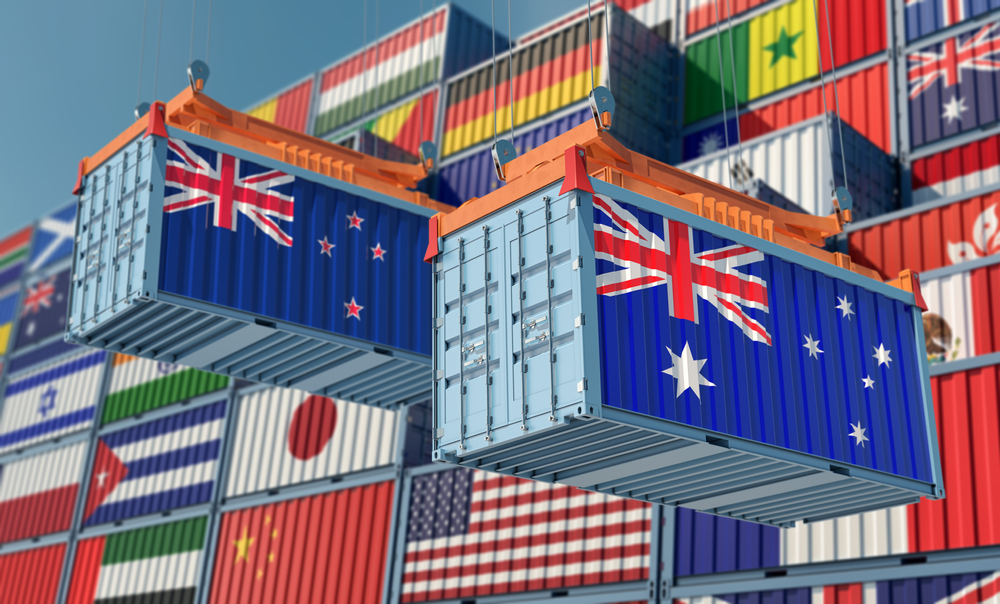AUSTRALIA AND NEW ZEALAND PROGRESSING WITH E-INVOICING MANDATE

B2G e-invoicing has been progressing fast during the last few years and remains ahead of B2B both in terms of implementation and the level of harmonization. Just in Europe 28 countries rely on PEPPOL framework as a standardized e-invoicing solution. However, currently PEPPOL is also expanding globally. Australia and New Zealand have decided to select PEPPOL as an e-invoicing framework in their jurisdictions.
Overview of the PEPPOL landscape can be found in one of my recent articles (here).

Australia and New Zealand’s joint approach to e-invoicing
Both governments have decided to promote the digitalization by implementing the e-invoicing obligation. For both governments this is a matter of a large-scale benefit if we look long-term, which may bring up to 2 billion USD of benefits each year.
The first important step in this respect was made on 25 October 2018, when Australia and the New Zealand representatives signed the Trans-Tasman Electronic Invoicing Arrangement. As defined in Point 1 of the document, “The objective of the Arrangement is to create and maintain a common Australia and New Zealand e‑Invoicing approach in order to improve productivity and reduce the costs of doing business for both government and industry through an interoperable single digital economic market. The Australia and New Zealand Electronic Invoicing Board will administer this arrangement.”[1]
In both countries the relevant PEPPOL authority has been established to enable more effective implementation of e-invoices. In New Zealand this is administered by the Ministry of Business, Innovation and Employment (MBIE). In Australia it is administered by the Australian Taxation Office (ATO).
E-invoicing mandate
Australia and New Zealand are not obliged to follow any international deadlines in terms of e-invoicing implementation. The governments are independent in this regard and have created their own mandate by signing the above-mentioned e-invoicing agreement.
The agreement itself sets a very general outline for cooperation without indicating any particular information, such as deadlines, actions, or stakeholders. What is important, however, is that the document is a clear declaration on the part of both governments to implement and enable widespread e-invoicing based on the Digital Service Standard (a concept that has been designed to help digital teams build government services that are simple, clear, and fast). A number of governmental services have already been covered with this standard, including trade mark search, digital marketplace, and import services.
The agreement establishes three foundation marks for the e-invoicing. These include:
- the creation of the common Australian-New Zealand e-invoicing approach
- stimulating the usage of e-invoicing across industry sectors in both jurisdictions
- the creation of simple and practical e-invoicing procedures
As a next step in the e-invoicing journey, in February 2019 the Australian and New Zealand government stakeholders jointly announced adoption of the PEPPOL standard for the Trans-Tasman e-invoicing framework. It came into force in late 2019, when the PEPPOL authorities were established in both countries. Currently the accreditation phase is in place and service providers are invited to apply for the procedure.
As regards the deadlines, the governments have not yet placed any particular dates for the mandate to become valid. The Australian government seems more decisive in this regard. Within the frames of the Digital Business Plan, it is intended that as of 1 July 2022, all agencies will be obligated to implement e-invoicing. At the same time, it is expected that up to 80% of invoices will be received electronically by mid-2021. As a next step, it has also been suggested that e-invoicing may become obligatory for public authorities at all levels, as well as for private businesses.
On the other hand, New Zealand seems a bit more relaxed in terms of imposing fixed deadlines. Unofficial sources on the implementation of the e-invoicing mandate in New Zealand are indicating the end of 2022.
Getting started with e-invoicing
Businesses that plan to implement e-invoicing will first review their current accounting process landscape and ensure that the accounting software is ready to support e-invoicing.
The next important step is to choose the e-invoicing service provider who will enable the compliant e-invoicing process. Depending on the accounting software in use, the solutions may include a built-in functionality or a system add-on. The main criteria here should be that the provider is the accredited service provider who meets the accreditation requirements. (The accreditation documentation has been published officially for both Australia and New Zealand here).
Many government agencies have already started the e-invoicing process. From 1 January 2020, the Australian Commonwealth government agencies that were capable of receiving e-invoices began paying eligible e-invoices.
E-invoice quick payment
In order to encourage the implementation and usage of the e-invoices, the governments of Australia and New Zealand have taken steps to introduce the rule for prompt payments in case of transactions documented with an e-invoices. In Australia the payment deadline for e-invoices has been set at 5 days, whereas New Zealand’s government offers a 10-day payment term for all e-invoices.
The payment policy approach is worth noting, as it encourages many small businesses to explore e-invoicing solutions. Apart from imposing the obligation (as in the EU), it seems reasonable to make use of such cash-flow tools to empower and prepare businesses for digitalisation.
E-invoicing accreditation requirements
Both in Australia and New Zealand, providers who wish to deliver e-invoicing services must be recognized as trusted professionals, which is verified during the accreditation process. To meet the criteria, providers are required to offer certain validations within their solutions, including the verification of business numbers (ABN, the Australian Business Number, or NZBN, the New Zealand Business Number) to ensure they are active and valid for use in the e-invoicing environment. These numbers are local identification numbers that are supposed to raise the credibility of the party to the transaction. Thus such an obligatory checkpoint will also strengthen e-invoicing’s integrity.
Accreditation under the PEPPOL e-invoicing model is available under one of the two variants:
- service metadata publisher (SMP) – provider of the ‘address book’ service, which allows the e-invoice to be properly addressed and sent to the right customer, and
- access point (AP) – provider provides a service of transporting of the e-invoice between the vendor and customer.
Both service variants are indispensable to providing an end-to-end e-invoicing service. Therefore, it is expected that e-invoicing service providers will offer both services. Still, it is possible for users to choose different providers for the said services (AP and SMP). Eventually, the most important element when considering the use of the service provider’s e-invoicing solution is whether such a provider is certified by PEPPOL.
[1] Australia and New Zealand Government Electronic Invoicing Arrangement, October 2018












